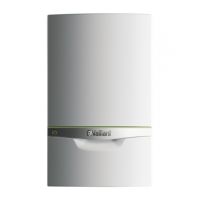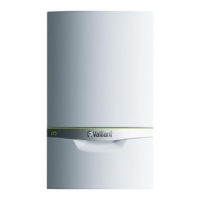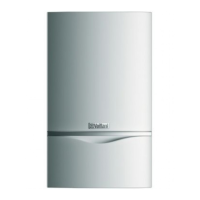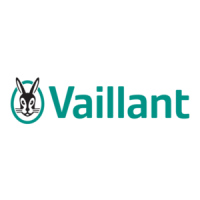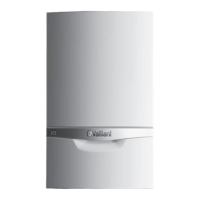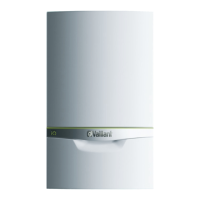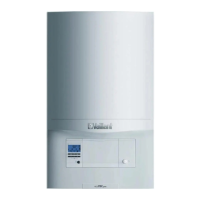What to do if the water pressure is too high in my Vaillant Boiler?
- IIsabella DonaldsonJul 26, 2025
If the water pressure in your Vaillant Boiler exceeds 2.9 bar, you should check and adjust it to the correct level.
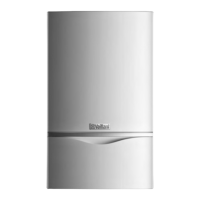
What to do if the water pressure is too high in my Vaillant Boiler?
If the water pressure in your Vaillant Boiler exceeds 2.9 bar, you should check and adjust it to the correct level.
What to do if Vaillant ecoTEC exclusive Boiler is within the waiting period of the modulation block/operation block function due to water shortage?
If your Vaillant Boiler is in a waiting period because of a large flow-return spread due to water shortage, simply allow the appliance to complete its waiting period. This is part of its normal operation.
What does it mean when the return sensor test is running on my Vaillant ecoTEC exclusive?
If the return sensor test is running on your Vaillant Boiler, heating demands are blocked. Wait for the return sensor test to complete.
What to do if the water pressure sensor test is running on my Vaillant ecoTEC exclusive?
If the water pressure sensor test is running, heating demands are blocked. Wait for the water pressure sensor test to complete.
What to do if the flow/return sensor test is running on my Vaillant ecoTEC exclusive?
If the flow/return sensor test is running on your Vaillant Boiler, heating demands are blocked. Simply wait for the flow/return sensor test to complete.
What to do if the exhaust gas diverter return signal blocks burner operation in my Vaillant ecoTEC exclusive Boiler?
Inspect the exhaust gas diverter and condensate pump of your Vaillant Boiler.
| Model | ecoTEC exclusive |
|---|---|
| Mounting | Wall-mounted |
| Fuel Type | Natural Gas |
| ErP Rating | A |
| ErP Heating | A |
| ErP Water | A |
| NOx Class | 5 |
| Efficiency | 94% |
| Dimensions (H x W x D) | 720mm x 440mm x 338 mm |
| Control | eBUS |
| Warranty | 5 years |
| Type | Condensing Combi Boiler |
Explanation and interpretation of safety warnings and symbols used in the manual.
Essential safety measures for handling, installation, and immediate actions for gas detection.
Step-by-step safety protocol to follow in case of suspected gas leaks.
Guidelines for choosing a suitable and safe installation location for the boiler.
Critical safety and technical instructions for correctly connecting the gas supply.
Guidance on connecting the cold and hot water supply and return lines.
Steps for connecting the central heating flow and return pipes to the boiler.
Essential guidelines for installing the flue system, including pipe types and termination.
Safety recommendations for the location of flue terminals to prevent hazards.
Instructions for installing and ensuring the proper functioning of the condensate drainage system.
Critical safety warnings and procedures for connecting the boiler to the electrical power supply.
Specific steps for connecting the boiler's power cable to the mains supply socket.
Procedures for filling and venting the boiler and the heating system with water.
Essential safety step to fill the condensate trap with water to prevent hazardous gas leaks.
Recommended schedule and frequency for performing inspections and maintenance tasks.
Instructions for the maintenance and servicing of the appliance's compact thermal module.
Method for cleaning the heat exchanger to ensure optimal heat transfer.
Instructions for cleaning the condensate trap to maintain safety and functionality.
Process for inspecting and adjusting gas settings for safe and efficient operation.
Method for measuring the gas inlet pressure to confirm it meets operational requirements.
Procedure for measuring and adjusting the CO₂ level to ensure efficient and safe combustion.
A comprehensive list of error codes (F.xx), their meanings, and potential causes.
Critical safety precautions that must be observed before and during the replacement of any part.
